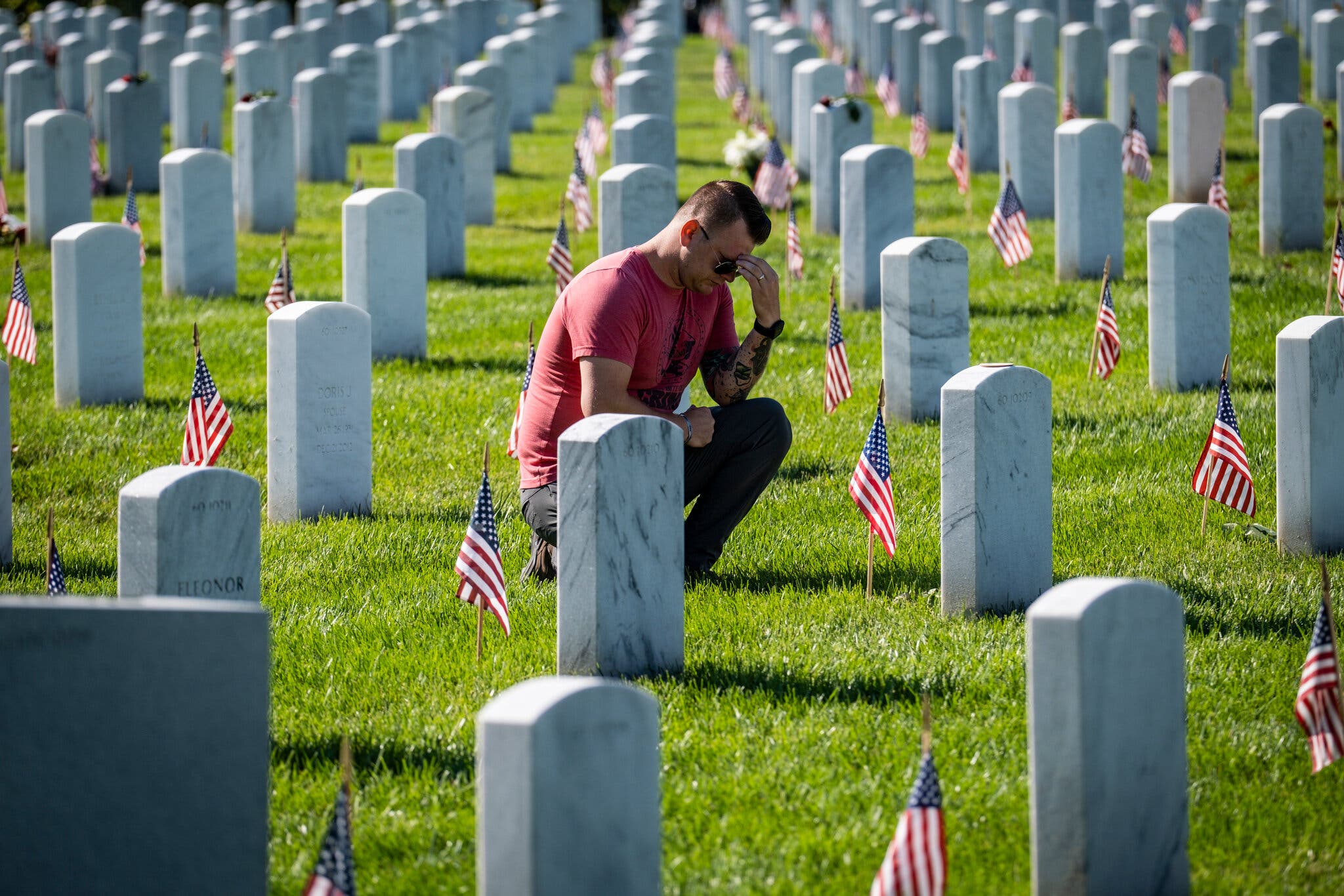BLOG
Memorial Day’s Tangled Roots and Why We Celebrate It
This holiday marks the unofficial start of summer and honors those who have served in the nation’s wars.
There is no doubt that Memorial Day weekend is one of the busiest travel weekends of the year in the United States; a day for cookouts, beach trips, and auto races. But how did Memorial Day, held on the last Monday of May, come about?
Briefly, here’s what you need to know:
Civil War remembrance
The holiday grew out of the Civil War, when Americans — Northern, Southern, Black and white — struggled to honor the staggering number of dead soldiers, at least 2 percent of the U.S. population at the time. The origin of Memorial Day can be traced to several places. According to one of the earliest accounts, three women placed flowers and wreaths on graves of soldiers who died serving the Union during the Civil War in Boalsburg, Pa., in October 1864.
In May 1865, a large procession was held in the ruined city of Charleston, South Carolina. There, thousands of Black Americans, many of whom had been enslaved until the city was liberated just months earlier, commemorated the lives of Union captives buried in a mass grave at a former racecourse. The service was led by some 3,000 schoolchildren carrying roses and singing the Union marching song “John Brown’s Body.” Hundreds of women followed with baskets of flowers, wreaths and crosses, according to historical accounts.
During the war, cities throughout the North and South began to honor the dead. The village of Waterloo, N.Y., decorated its flags at half-staff with evergreens and mourning black in May 1866. It is said that women placed flowers on both Confederate and Union soldiers’ graves in Columbus, Miss., that same year.
What does a name mean?
History agrees that the first widely held commemoration took place in 1868, when Gen. As commander of the Grand Army of the Republic, an organization of Union veterans, Logan called for a national holiday to honor the Civil War dead. Nearly every city, village, and churchyard contained their bodies, he said.
Logan wrote in an order that May 30 should be “designated for the purpose of strewing flowers on the graves of comrades who died in defense of their country.”
For many years, the commemoration was widely referred to as “Decoration Day.” But as it evolved to honor not only Civil War soldiers but all troops who had fallen serving the country, Americans began referring to the observance as “Memorial Day.” Among the first references to the commemoration in The New York Times is an article published on June 7, 1868. In describing a note, with an accompanying wreath, by “a little girl about 10 years of age” requesting that an official put the garland on an unknown rebel soldier’s grave, it is noted that her father was buried in Andersonville, Ga.
It describes processions in New York City and Brooklyn (then separate cities), among other places, in another article published on May 31, 1870. It was noted in the article that, aside from Independence Day, there was no other day that evoked more patriotic feelings than Memorial Day, which, according to the article, is a national holiday enacted by the people rather than by the legislature.
A few years later, the government decreed that Memorial Day should occur on the last Monday of May, rather than May 30.
As part of the effort to create three-day weekends, Sarah Weicksel, director of research and publications with the American Historical Association, said: “They wanted people to be able to get together.”
How about Veterans Day?
As Memorial Day has evolved, it still honors the nation’s war dead, while Veterans Day honors everyone who has served in the armed forces.
Originally called Armistice Day, Veterans Day commemorates the end of World War I in 1918; it was first celebrated in 1919, but was widened in the 1950s to include all veterans.
Those who served their country are honored on both holidays, and they seem to be commemorated in similar ways now. A professor of history at the University of Texas at Austin, Henry W. Brands, wrote by email that veterans “wanted their own commemoration after World War I, which North and South could celebrate together.”
History is contested
There is still no clear answer to the true origins of Memorial Day, experts say, more than 160 years after the American Civil War ended. Despite its Black history, the holiday has not been universally embraced. During an American Legion service in Hudson, Ohio in 2021, a veteran who tried to credit Black Americans was silenced.
David W. Blight, a Yale University historian, said that Charleston forgot this story because it didn’t fit with the emerging narrative of the defeated South. A site that was once popular with plantation owners was the site of the racecourse procession, which he discovered in the 1990s. Black marchers reinscribed it in honor of their freedom, he said.
Dr. Blight argues that white Southerners used Memorial Day to maintain their Lost Cause mythology, which portrayed the rebellion as an honorable uprising against Northern tyranny.
The notion that both sides of the war had fought for a noble cause was rejected early on by Frederick Douglass, who said at Arlington National Cemetery on Memorial Day in 1871: “We must never forget that victory for the rebellion meant death for the republic.” The loyal soldiers who rest beneath this sod put themselves between the nation and its destroyers.”

